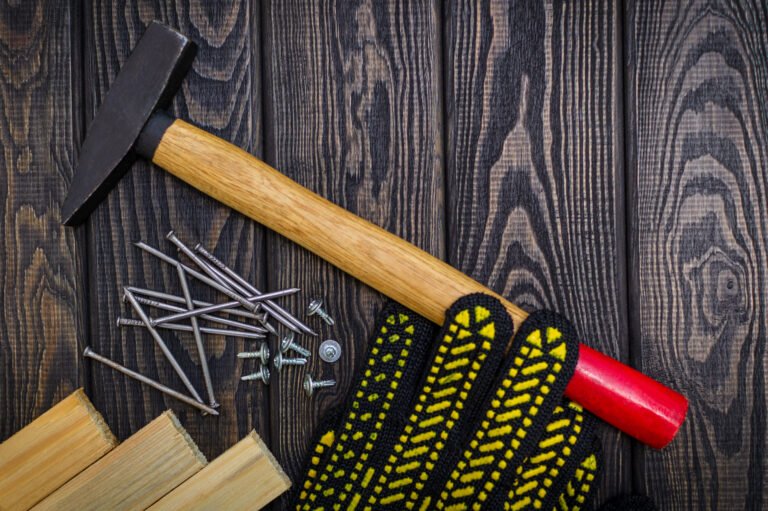Backyard Vegetable Gardening for Beginners: A Comprehensive Guide
Backyard vegetable gardening offers an opportunity to cultivate fresh, organic produce right at home. This environmentally friendly and rewarding pastime not only promotes a healthier lifestyle but also allows beginners to develop hands-on experience with nurturing plants and improving their gardening skills. With a bit of time, patience, and effort, even the most inexperienced gardeners can transform their backyards into thriving plots filled with delicious homegrown vegetables.
To get started, it is essential to plan carefully, taking into consideration the available space, sunlight, and water resources. By selecting vegetables suitable for their environment, beginners can avoid common pitfalls that might discourage them from pursuing gardening as a hobby. They should start with easy-to-grow plants like tomatoes, lettuce, or carrots and gradually expand their garden as they become more comfortable with their green thumb abilities.
Aspiring gardeners should also learn about proper soil preparation, irrigation techniques, pest control methods, and other essential factors that contribute to the success of their vegetable garden. By acquiring this essential knowledge, they will soon discover the joy of nurturing plants from seeds to the bountiful harvest season. With time and practice, backyard vegetable gardening will become a fulfilling passion that benefits both the gardener and the environment.
Planning Your Vegetable Garden
Selecting the Right Location
Choosing the right location for your backyard vegetable garden is essential. Most vegetables require a minimum of 6-8 hours of direct sunlight each day for optimal growth. Observe your yard at different times of the day and identify areas that receive adequate sunlight. Make sure to also consider the size of your garden plot in relation to the available space.
Choosing Vegetables for Your Garden
As a beginner gardener, it’s best to start with easy-to-grow vegetables that require less maintenance and are more likely to produce a successful harvest. Some popular options include:
- Tomatoes
- Peppers
- Zucchini
- Green beans
- Lettuce
Once you have decided on the vegetables you want to grow, create a garden plan to ensure you allocate enough space for each plant. Keep in mind that some vegetables, like tomatoes, require more space than others. Utilize tools like square-foot gardening or raised beds to help organize and maximize your garden efficiency.
| Vegetable | Space Required (sq. ft.) |
|---|---|
| Tomato | 3 |
| Pepper | 1.5 |
| Zucchini | 4 |
| Green bean | 2 |
| Lettuce | 1 |
Understanding Your Growing Zone
Each geographic area has a hardiness zone that indicates which plants will thrive based on the local climate. Before selecting vegetables for your garden, it is crucial to understand your growing zone and which plants are suitable for the region. To find out your hardiness zone, consult the USDA Plant Hardiness Zone Map.
Knowing your zone will not only help you choose the appropriate vegetables, but it will also guide you on the best planting times for your region. This information is particularly vital for beginner gardeners, as it can significantly impact your garden’s success. Keep track of the average first and last frost dates in your area to ensure your plants have enough time to grow and produce a bountiful harvest.
Preparing the Garden Bed
Soil Composition and Improvement
The foundation of any successful backyard vegetable garden begins with rich, fertile soil. The ideal soil composition contains a balance of organic matter, minerals, air, and water. One way to improve the quality of your soil is by adding compost or other organic materials, such as aged manure, grass clippings, or fallen leaves. These amendments not only enrich the soil with nutrients but also help with water retention and aeration.
For those with clay-heavy soil, adding organic matter or coarse sand can significantly improve its texture and drainage. It’s essential to avoid planting in pure clay soil, as it can become compact and restrict plant growth.
Raised Beds vs In-Ground Gardens
When it comes to backyard vegetable gardening, there are two main options: raised beds and in-ground gardens. Both have their benefits and drawbacks, which should be considered when deciding the most suitable method for your gardening needs.
| Raised Beds | In-Ground Gardens | |
|---|---|---|
| Pros | Better drainage | Space-efficient |
| Controlled soil | Lower cost | |
| Easier to maintain | Supports a wider variety of plants | |
| Cons | Higher initial cost | Requires soil improvement |
Raised beds are ideal for small-space gardens or areas with poor soil quality. These beds provide better drainage, improved soil composition, and facilitate easier maintenance, like weeding and pest management. However, they require an initial investment for construction materials and soil.
In-ground gardens are space efficient and more cost-effective, but may require more effort in improving existing soil composition. They also support a wider variety of plant types, as some vegetables may grow deeper roots, requiring the depth that in-ground gardens offer.
Effective Drainage and Aeration
Proper drainage and aeration are crucial for a healthy garden. These factors prevent waterlogged soil, which can contribute to root rot and other diseases that hinder plant growth.
For in-ground gardens, make sure to choose a location with a gentle slope. Alternatively, amend the soil with organic matter or coarse sand to improve its structure and drainage capabilities.
For raised beds, proper construction is key to ensuring good drainage. Start by placing a layer of coarse material (such as gravel, rock, or sand) at the bottom to facilitate water movement. The sides of the bed should also have holes drilled for excess water to escape.
Aeration in the soil is critical for plant root growth and access to oxygen. Organic matter, such as compost, provides a suitable environment for air pockets to form, while also retaining moisture. For soils prone to compaction, periodic loosening of the soil is encouraged to maintain proper aeration.
Planting Your Vegetables
Seed Sowing and Planting Transplants
When beginning your backyard vegetable garden, consider whether you want to start from seeds or use transplants. Seeds are generally less expensive, but transplants offer a head start, as they have already been seeded and grown in controlled environments.
For some vegetable varieties, such as tomatoes, it’s recommended to begin with transplants due to their long growing season. Lettuce and carrots are great options for starting from seed, as they germinate quickly and reach maturity sooner.
Timing and Staggering Plantings
One essential practice in backyard gardening is understanding the ideal planting time for each vegetable variety. The planting time should be based on factors such as frost dates, days to maturity, and ideal temperature range for germination.
Moreover, consider staggering the plantings to ensure a consistent harvest throughout the season. This method involves sowing seeds or transplanting new plants in intervals, rather than all at once. For example, you may plant lettuce seeds every two weeks to maintain a steady supply of fresh leaves.
Here’s a quick reference table for planting times and days to maturity for some common vegetables:
| Vegetable | Ideal Planting Time | Days to Maturity |
|---|---|---|
| Tomato | Late spring | 60 – 80 |
| Carrot | Early spring | 60 – 75 |
| Lettuce | Early spring | 30 – 60 |
Spacing and Depth Guidelines
Proper spacing and depth are crucial factors for the successful growth of vegetables. Each species has specific requirements to ensure optimal breathing room and nutrient absorption.
To help you plan your backyard garden, here is a brief spacing and depth guide for the mentioned vegetables:
- Tomatoes: Space transplants 18-24 inches apart with a planting depth of up to the first set of true leaves. This allows for strong root system development.
- Carrots: Sow seeds about 2-3 inches apart and 1/4 inch deep. Seedlings can be thinned out later if necessary.
- Lettuce: Sow seeds 1/4-1/2 inch deep and 1 inch apart. Clip excess seedlings if they are overcrowded, leaving 4-6 inches between each plant.
Following these guidelines for planting, timing, staggering plantings, and proper spacing will help set the foundation for a flourishing backyard vegetable garden.
Maintaining the Garden
Watering and Irrigation Techniques
Watering the plants regularly is crucial to ensure their growth and health. Commonly used utensils like a hose or watering can work well. Setting up a drip irrigation system can help you maintain water distribution evenly and consistently. To avoid evaporation, it’s a good idea to water during the early morning or early evening.
Below are some watering guidelines:
| Plant Type | Water Needs | Frequency |
|---|---|---|
| Root Vegetables | Deep and Less | Once a Week |
| Leafy Greens | Shallow and More | Every 2-3 Days |
| Fruiting Plants | Moderate | Every 3-4 Days |
Maintaining a consistent watering schedule while taking the weather into account ensures a healthy and thriving garden.
Mulching and Weed Control
To protect your garden soil and control weed growth, apply a layer of mulch. Organic mulches like shredded leaves, grass clippings, or straw can improve soil fertility as they decompose. They also help retain moisture and regulate soil temperature. A 2-3 inch layer of mulch will suffice.
Weed control can be accomplished in several ways:
- Manually removing weeds as they emerge
- Applying chemical herbicides
- Using landscape fabric or plastic cover beneath the mulch
Implementing companion planting can also aid in weed control by filling up space and suppressing weed growth.
Dealing with Pests and Diseases
Preventing and addressing pests and diseases is a significant part of maintaining the garden. Observe these techniques for a healthy garden:
- Disease: Incorporate crop rotation practices and avoid planting the same vegetable in the same area for at least three years. Keep the garden clean and free of plant debris to minimize disease spread.
- Companion planting: Surround your vegetable plants with companion plants that ward off pests. For instance, garlic and chives planted near roses can deter aphids.
- Deer: Install mesh fencing around your garden or use deer-resistant plants to deter deer grazing in your garden.
Regarding specific pests, consider using organic solutions like Bacillus thuringiensis (Bt) for caterpillars. Applying fertilizers and ensuring the overall health of your plants will also reduce the likelihood of disease and the attraction of pests.
Incorporating trellising can help prevent plant diseases by elevating plants off the ground and promoting air circulation. This technique reduces humidity around your plants, making them less susceptible to diseases.
Harvesting and Enjoying Your Produce
Knowing When to Harvest
Harvesting your produce at the right time is crucial for taste and quality. For tomato plants, pick the fruits when they are fully colored and slightly soft to the touch. Zucchini should be harvested when they are about 6 to 8 inches in length, while tender and easy to pierce with your fingernail. For spinach, the best time to harvest is when the leaves are large enough to eat but before they begin to yellow. Radishes generally take about 3-4 weeks until they’re ready. You can pull them out when they have reached 1 inch in diameter. Keep in mind, these are general guidelines and may vary depending on specific plant varieties.
Post-Harvest Handling and Storage
Proper post-harvest handling and storage can make a significant difference in the lifespan and taste of your homegrown vegetables. Here are some tips:
- Tomatoes: Store them at room temperature, away from direct sunlight, with the stem-end facing up to prevent bruising.
- Zucchini: Store in the refrigerator, preferably in a plastic bag with small holes for air circulation. Consume within 1 week.
- Spinach: Keep your spinach unwashed in a perforated plastic bag in the refrigerator. It should last up to 1 week.
- Radishes: Remove the leaves, wash the roots, and store in a sealed plastic bag in the refrigerator for up to 2 weeks.
Cooking and Preserving Tips
To fully enjoy your fresh, homegrown produce, try these cooking and preserving ideas:
- Tomatoes: Use ripe tomatoes to make homemade pasta sauce, salsa, or add them sliced to a sandwich. Unripe tomatoes can be fried or pickled.
- Zucchini: Zucchini can be grilled, sautéed, or added to stews and casseroles. For longer preservation, try pickling or freezing them.
- Spinach: Sauté your fresh spinach with garlic and olive oil, toss it in salads, or add to a smoothie for a nutritious boost. To store longer, blanch and freeze it.
- Radishes: Enjoy your radishes raw in salads, or try roasting them for a unique twist. They can also be pickled, which extends their shelf life.
By following these tips on harvesting, storage, and cooking your homegrown vegetables, you can ensure great taste and quality. Enjoy the fruits of your labor and taste the difference that comes with growing your own produce.







